Cheese
Cheese production is a fermentation and coagulation process during which milk is concentrated. The main ingredients of cheese are casein (protein) and fat. The average ratio between the original milk and cheese is 10:1.
The production of cheese to preserve milk is a process that has been practiced for many years.
Cheese is divided into different groups. Hard cheese, soft cheese and slicing cheese are defined on the basis of their water content. The exact definition is described in the FAO/WHO Standard A6, A7, A8.
Cheese production is a fermentation and coagulation process during which milk is concentrated. The main ingredients of cheese are casein (protein) and fat. The average ratio between the original milk and cheese is 10:1.
Process steps in making cheese
Since there are a great many different types of cheese, only the general process steps will be described here.
In order to produce cheese, the milk is first standardized (fat and protein content are set) and sometimes pasteurized.
A number of ingredients should be added. First a small amount (120ml/100 kg milk) of CaCl2 to provide the structure, then lactic acid bacteria to lower the pH and to give the specific taste of the used culture, sometimes a color agent is added to the milk for a darker yellow color of the cheese. The last ingredient in this phase is rennet.
Rennet is an enzyme which occurs in calves' stomachs. It cuts the 'hairs' of casein, which leads to protein coagulation. This process is called curdling and lasts only around 30 minutes. Only very small quantities of rennet are required in this case (30 ml/100 kg milk. Its effect is supported by a decreasing pH value caused by lactic acid fermentation.
Cheese makers use lactic acid bacteria, which are mesophilic (optimum: 25 to 40°C), thermophilic (up to 50°C) or mixed types depending on the type of cheese to be produced. The bacteria is either produced by the dairy itself in a pure culture or manufactured industrially by commercial companies. Pure cultures must be produced very carefully according to hygienic principles since the effect of a false culture can lead to substantial product losses. The culture can be added to the milk via fully automated metering systems en route to the maturing tanks or cheese producer or can also be placed in the tank. The CO2 produced during fermentation is responsible for the holes in cheese.
After the curdling process, the jelly (called curd) is cut ins pieces of about 0.5 cm3 and the cut is stirred. The stirring provides the jelly parts to contract, which causes whey to be pressed out of the curd. The released whey is first removed. Some cheese types require heat treatment and/or warm water. When the whey gets out of the curd, the lactose and water concentration of the jelly parts decreases. At a lower concentration of lactose the growth of the lactic acid bacteria declines and avoids that the pH drops too much. For some types of cheeses nitrate (NaNO3) is added. Nitrate is slowly transformed into nitrite by the enzyme xanthine-oxidase. Nitrite prevents the germination and growth of spores or butyric acid bacteria
With the added water a second whey amount is let off. The most common used way is to drain the curd by a sieve. The left curd is put in a form. The curd is then pressed in a form and drained in order to remove all the remaining whey (< 2%).
A salt content of between 0.5% and 2% is applied to the cheese. This process is carried out either dry or in a brine bath. The brine in a brine bad is adjusted to pH 4.5 - 5.0 with 18% - 23% NaCl solution and is kept at a temperature of between 12 and 15°C. Salting removes additional whey from the cheese and strengthens the structure of the casein. The duration of the brine bath depends on the type of cheese, this varies from a few hours to a few days.
The cheese is washed and stored. In order to prevent excessive water loss and to avoid external micro-organisms, the cheese is often coated with paraffin or plastic (contains enzymes like natamycine or pimaricine to decrease yeast growth). The amount of lactose and protein in cheese is reduced during storage by riping caused by the remaining lactic acid bacteria activity The temperature and humidity must be matched precisely to the cheese type varying in temperature from 12 to 20°C and in humidity from 70 to 95%. The storage time lasts from a weeks to several months.
Differences and their effects in cheese production
Milk treatment
Standardization
The fat and protein levels has to be set during standardization of the milk for a constant quality. Without standardization these levels varies trough the year, because of the changing feed in summer and winter, which has an effect on the raw milk composition.
Pasteurization (15 s. at 70ºC)
Pasteurization decimates most bacteria, including micro organisms that can cause food spoilage or food borne diseases. But pasteurization also inhibits or kills the useful micro-organisms like lactobacilli, needed in the cheese making process. Adding a culture of milk acid bacteria is therefore needed.
Production of cheese without pasteurization is also possible, but requires more hygienic precautions to avoid any risk for children, pregnant women and elder. In some soft cheese the pathogenic Listeria M. can be found.
Sometimes the milk is thermized for a short time at a lower temperature to decimate extensive growth. Poor hygienic design leads to selection of thermoresistent micro organisms which survives this treatment and has an adverse effect on the further treatment of e.g. the whey.
Curdling
Curdling can take place at different temperatures and during different times. Also the ingredients (rennet originated of calves and/or micro-organisms) which are used for curdling are different and give own specific structures and tastes to the cheeses.
The optimum for curdling depends on the ingredient which is being used and can be at 20ºC up to 40ºC. At lower temperatures the amount of water in the cheese will be higher. At very high temperatures the activity of the rennet drops due to the precipitation around protein parts which holds gel forming.
After the gel forming of rennet the gel is mostly being cut and stirred. By cutting the gel into small pieces the whey is released, and lowers the amount of water during the proces mostly.
When not cut you get a very soft cheese with large amounts of moisture.
The temperature of the mass is of great influence during stirring. Stirring at a higher temperature gives a cheese with a lower moisture content. The temperature should not be too high, a dry 'skin' around the curd particles can hinder coalescence.
There are a few possibilities to drain the curd. Most used way is to drain the curd and let the whey seep through holes of a sieve into a reservoir. Another possibility is to separate in a centrifuge (used for Bakers'). Leaving the whey in the curd (mostly in combination whit not cutting the curd) gives a cheese with a high content of moisture.
Curd treatment
Washing the curd
After the curdling (and letting of the first whey) it is possible to wash the curd with clean (warm) water. By washing the amount of water soluble lactose is reduced This step prevents a too big pH drop because lactobacilli get less nutrition.
Heating the curd
Heating the curd gives a cheese with lower amount of moisture. Warming up the curd also has influence on the structure of the cheese (used in Asiago d' Allevo).
Forming and pressing of the cheese
Most cheeses are placed in a form just after the curd is ready. This form is identical to the form of the later cheese.
By pressing the cheese the content of moisture lowers further. Pressing takes mostly 60-90 minutes at 5 bar. Pressing also provides the coalescence of the curd.
Most cheeses does not have an external force to press the cheeses and stand for 24 hours in their form.
Brining
Most cheeses are salted in a brining bad of water, salt and acid. The brining time depends on the requested amount of salt and the moisture content.
In a brining bad an exchange of moisture and salt takes place. With a higher moisture content of the cheese the exchange is easier and reduces therefore the brining time. Brining decreases or even stops the activity of lactobacilli.
Another way to salt the cheese is adding salt to the curd before forming the cheese, e.g. Asiago Pressato. Difficulty of this procedure is the solubility of the salt and structure of the cheese. Getting a cheese with a blind structure is hardly impossible because the adding of salt brings air into the curd.
In a brine bad can be added different ingredients (for example spices) to provide the taste of the cheese (used in Appenzeller).
Most brine baths are not designed to be cleaned. Different salt-like micro organisms can be found which could lead to food spoilage.
Riping
The last step of the cheese production is riping. The riping time depends on the type of cheese, from one week (like Ovci Hrudkovy, Färsk Getost, Crescenza) to a few years (e.g. Asiago d' Allevo). Some cheeses are consumed without any riping (like Cottage Cheese).
During the riping proteins are changed by enzymatic reaction ( broken down) and give the specific taste of old cheese.
Lactose gives a sweet cheese. Reduction of the lactose level by the growth of the number of lactobacilli gives a less sweet taste.
The consistence of most cheese gets firmer during riping due to the loss of moisture. A very high level of humidity (for instant 95%) avoids the loss of the moisture and the consistency remains less firm.
During the riping moulds can grow on cheeses. Mould growth can be inhibited by a coating of paraffin or cheese plastic (Gouda cheese).
A number of cheeses has a specific culture of moulds (Passendale, Brie) or bacteria (Wynendale), which gives the cheeses the aromatic taste.
Another way to give the cheese a specific taste is to smoke the cheeses (Idiazabal, San Simón, Smoked Mozzarella). Smoking of products can easily be done in smoking boxes with liquid smoke.
Maintenance without obstacles
On average, 700,000 to 800,000 litres of milk are collected each day from Tyrolean farms and processed at the Wörgl site. The logistics are sophisticated: Tirol Milch has more than 20 vehicles in use collecting the milk, at times along extremely narrow alpine paths. They collect up to six different milk varieties from 3,000 farms. The varieties are kept strictly separate to avoid any mixing.
CAREFUL HANDLING OF RESOURCES
VEGAPULS 64 measures the level in whey production
Closeness to nature, protection of the environment and careful handling of natural resources are fundamental operating principles at Tirol Milch. For example, the plant has been a master of energy conservation for many years, every litre of milk can be traced back and every by-product is utilized. This requires disciplined procedures, particularly in the case of maintenance. VEGA sensors help ensure that these operations can now be conducted even faster.
The Tirol Milch plant in Wörgl, which belongs to the Berglandmilch Group, is renowned for its cheese far beyond the borders of Tyrol.
Yoghurt, butter and chocolate pudding are also produced at the site, but about two thirds of the collected milk volume is actually used in the cheese dairy. It went into operation in May 2014 and is today the second largest cheese production facility in Austria.
Networking material and energy flows
Close cooperation with the farms ensures a special connection to the homeland, which is ultimately also reflected in the technology that is used.
To provide the large amounts of energy required to make dairy products – in evaporation, milk cooling or container cleaning – alternative sources of energy, such as photovoltaics and an own wood chip heating system, are also utilized. In addition, all energy flows are combined so that consumption remains low. The deployment of elaborate process technology has paid off: the plant in Wörgl recently received an award as the most environmentally-friendly dairy business in Europe.
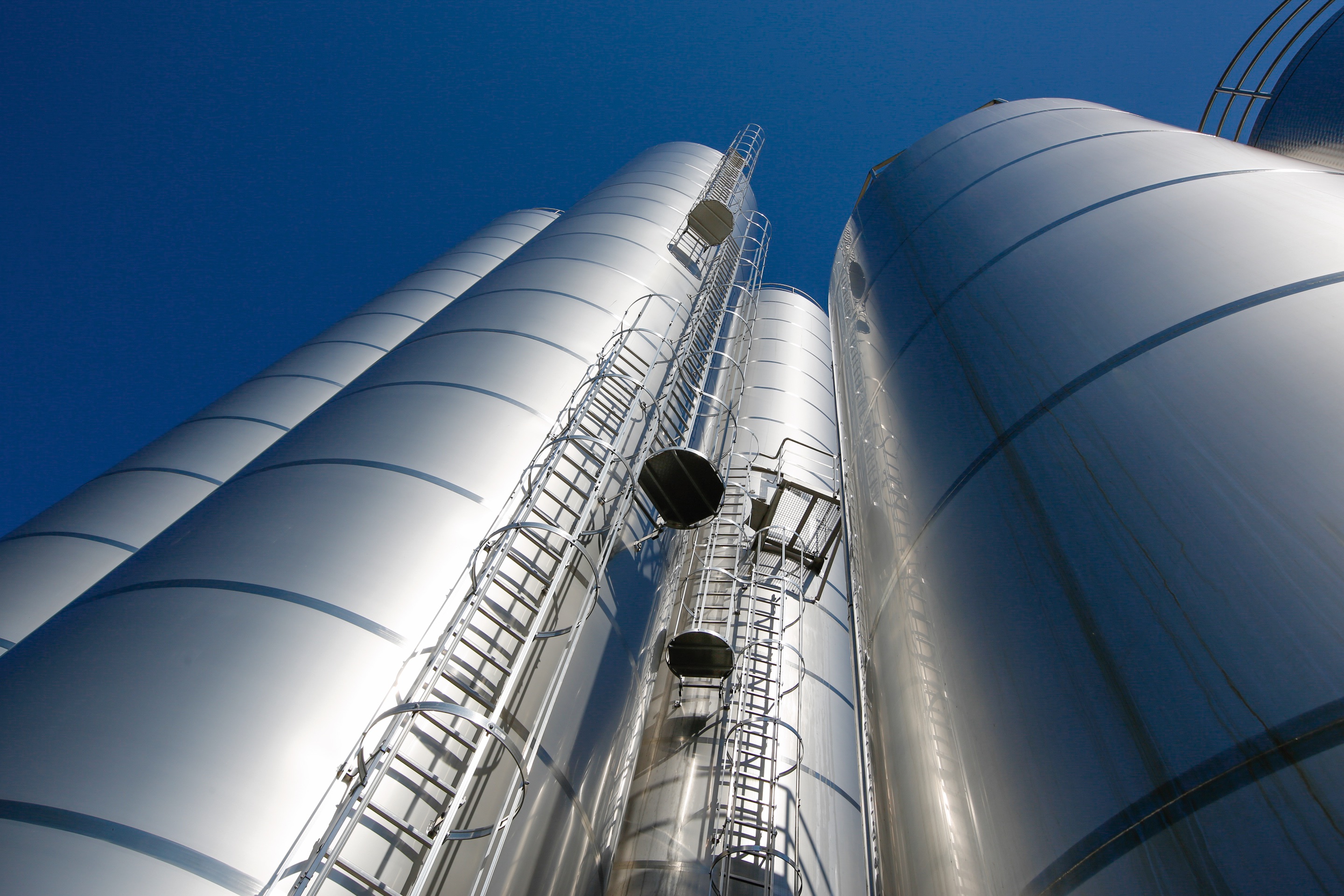
VEGAPULS 64 facilitates maintenance work
VEGA has been working together with the company for a long time. 10 to 12 VEGA radar level transmitters are currently in use. Martin Schneider, master electrician at Berglandmilch says he would have liked to have more, using the whey tanks as an example.
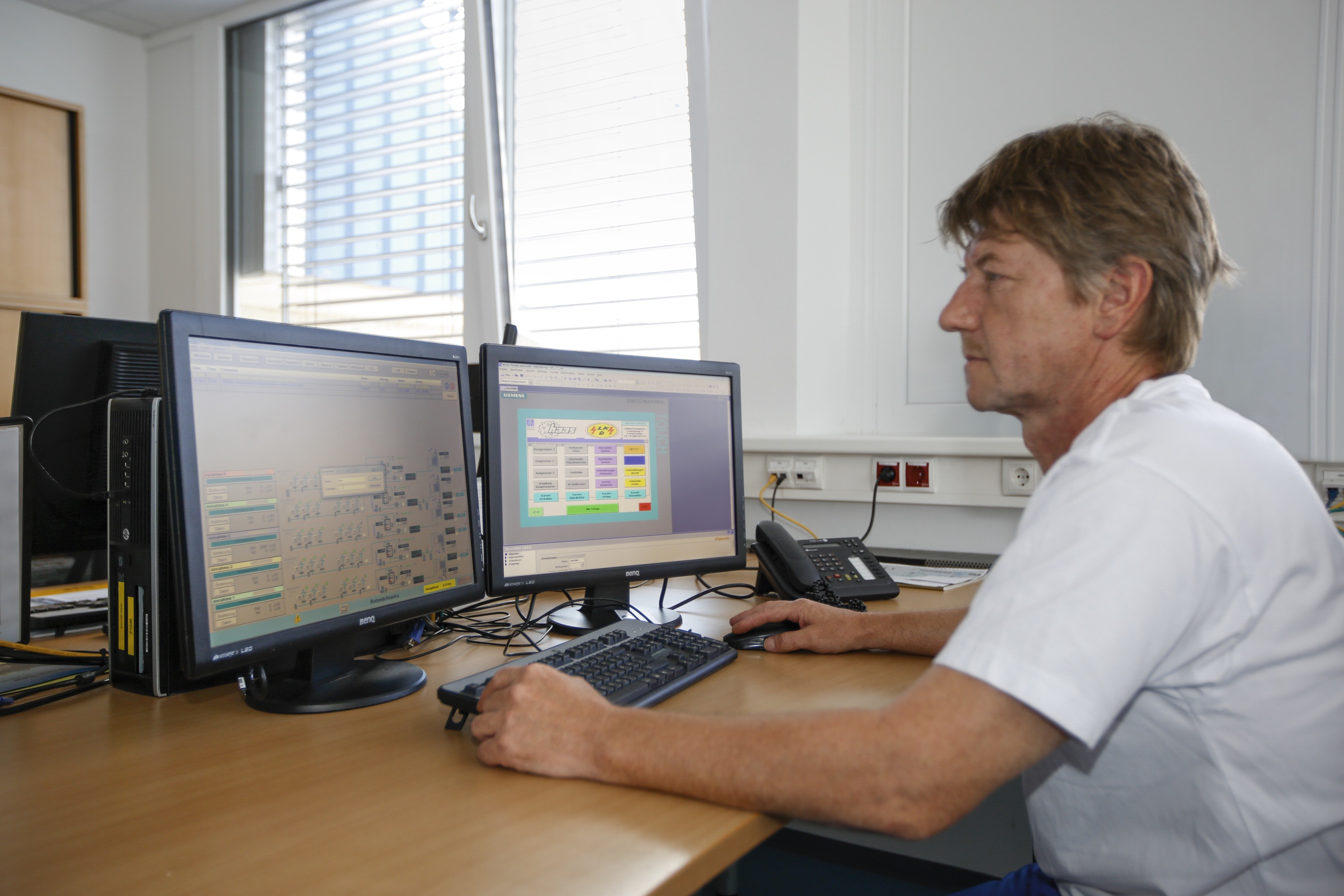
In the past, many tanks were equipped with level measuring systems, but these were usually delivered within the framework of a complete contract. In practice, this did not always prove to be particularly successful as the equipment suppliers were not level measurement specialists. A differential pressure system with sensors near the tank bottom was often supplied as standard equipment. From a maintenance point of view this was very labour intensive, as Schneider reports. "During the cleaning of the whey tanks, for example, mechanical damage to the diaphragm in the pressure transducers would occur again and again when a wrench fell into the tank." Another situation: the tanks are meticulously inspected at regular intervals. To do this, the milk technician has to climb into the tanks to inspect them from the inside. Again, there was a risk that the pressure transducers attached to the base could be damaged during each inspection.
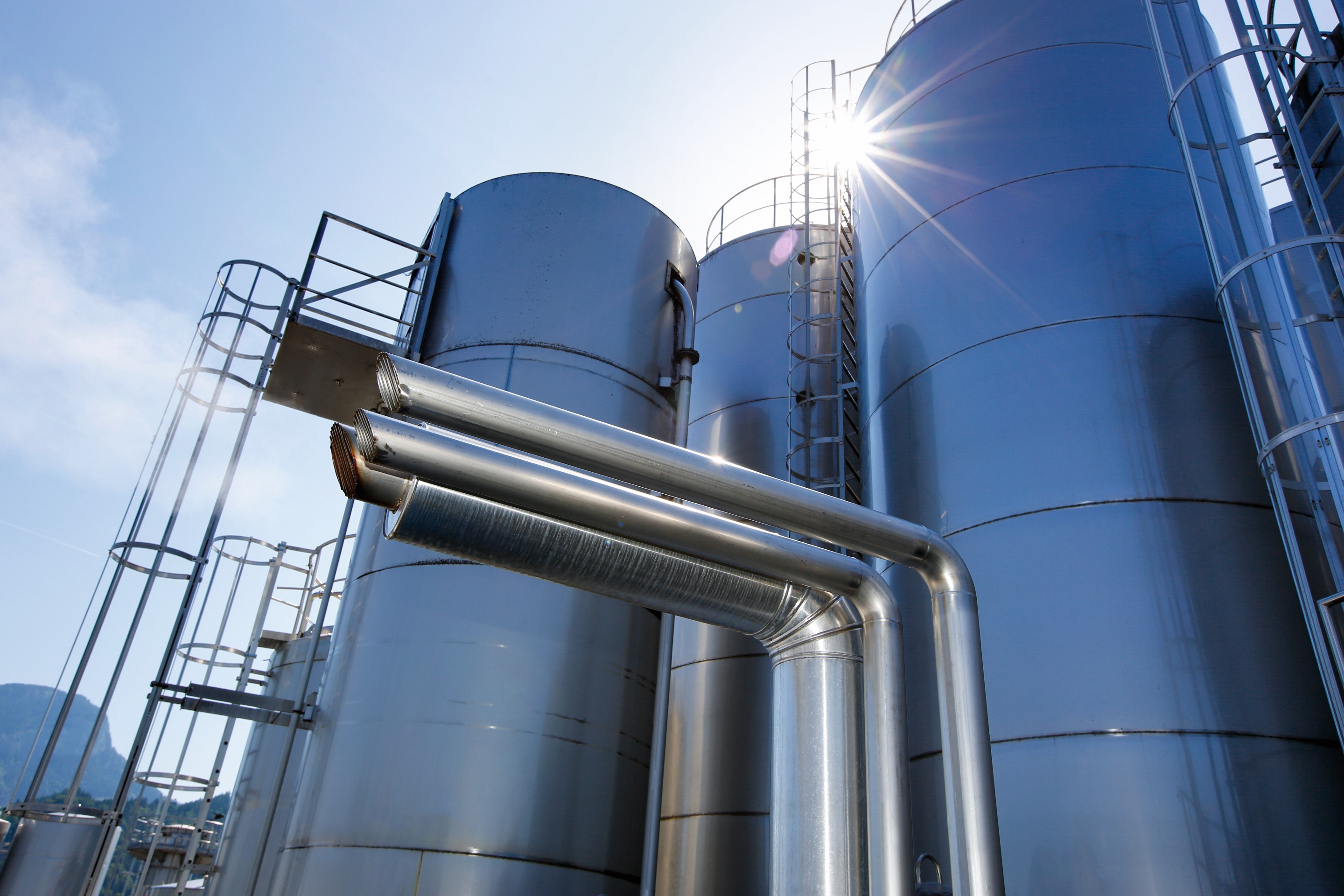
Hopes fulfilled
The three whey tanks were only put into operation in 2014. The situation became all the more unsatisfactory for Martin Schneider: apart from the mechanical problems, the existing level measuring system also created difficulties in other respects. Whey is not easy to measure using this kind of level measurement. "The protein foam caused problems repeatedly, the tank also has welds and an agitator. The spray balls interfere with the measurement too," explains Schneider.
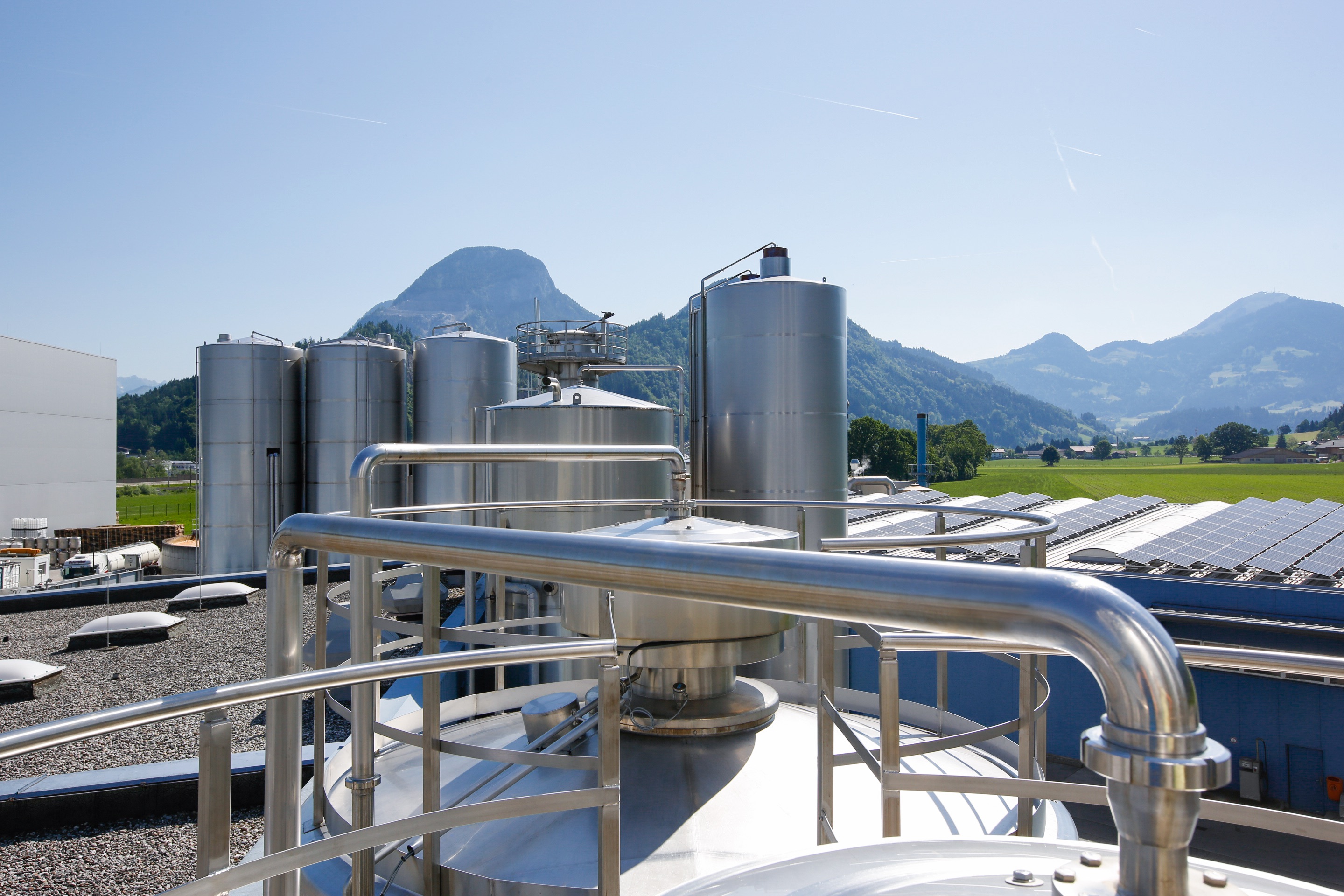
There was a further challenge: At the end of the tanks there is a centrifuge with an output of 50,000 litres per hour. The problem is that the tanks have a flat bottom, which makes an exact zero measurement impossible with the pressure transmitter mounted a few centimetres above the bottom.
As a result, air was repeatedly sucked into the centrifuge. Alpina, a company that processes the whey at the Tirol Milchwerk in Wörgl, was particularly affected by this. The whey is delivered to it via pipeline. These circumstances caused the fat content of the whey to change, which led to problems with Alpina's filter systems.
Meanwhile, the electrical engineering team had already heard that VEGAPULS 64, a new radar level transmitter, was under development. Schneider had high hopes that its high measuring frequency of 80 GHz would result in better focusing and higher resolution of the measuring signal. As soon as the first ones became available in 2016, all whey tanks were outfitted with the VEGAPULS 64 radar sensor.
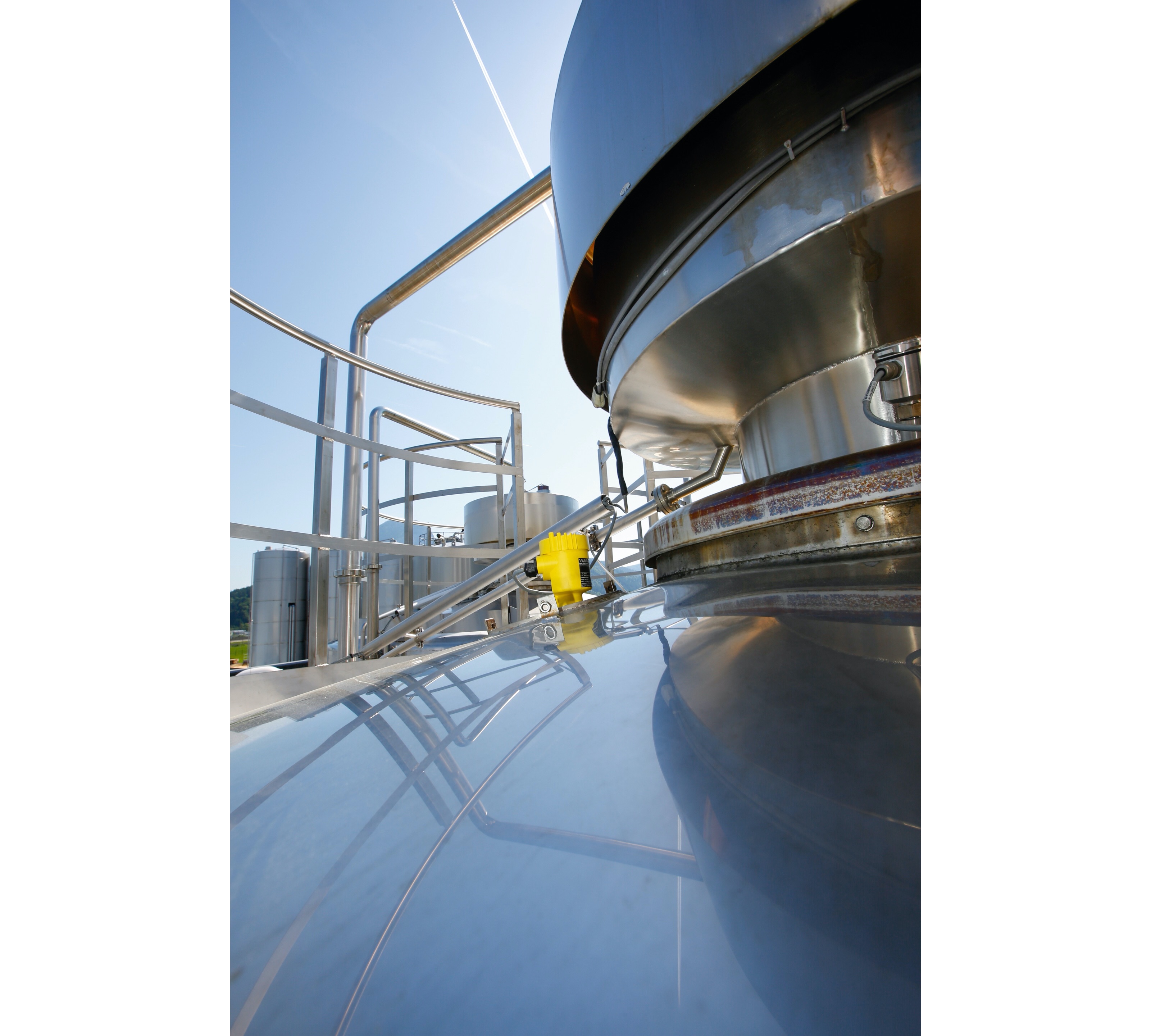
An old cure: whey
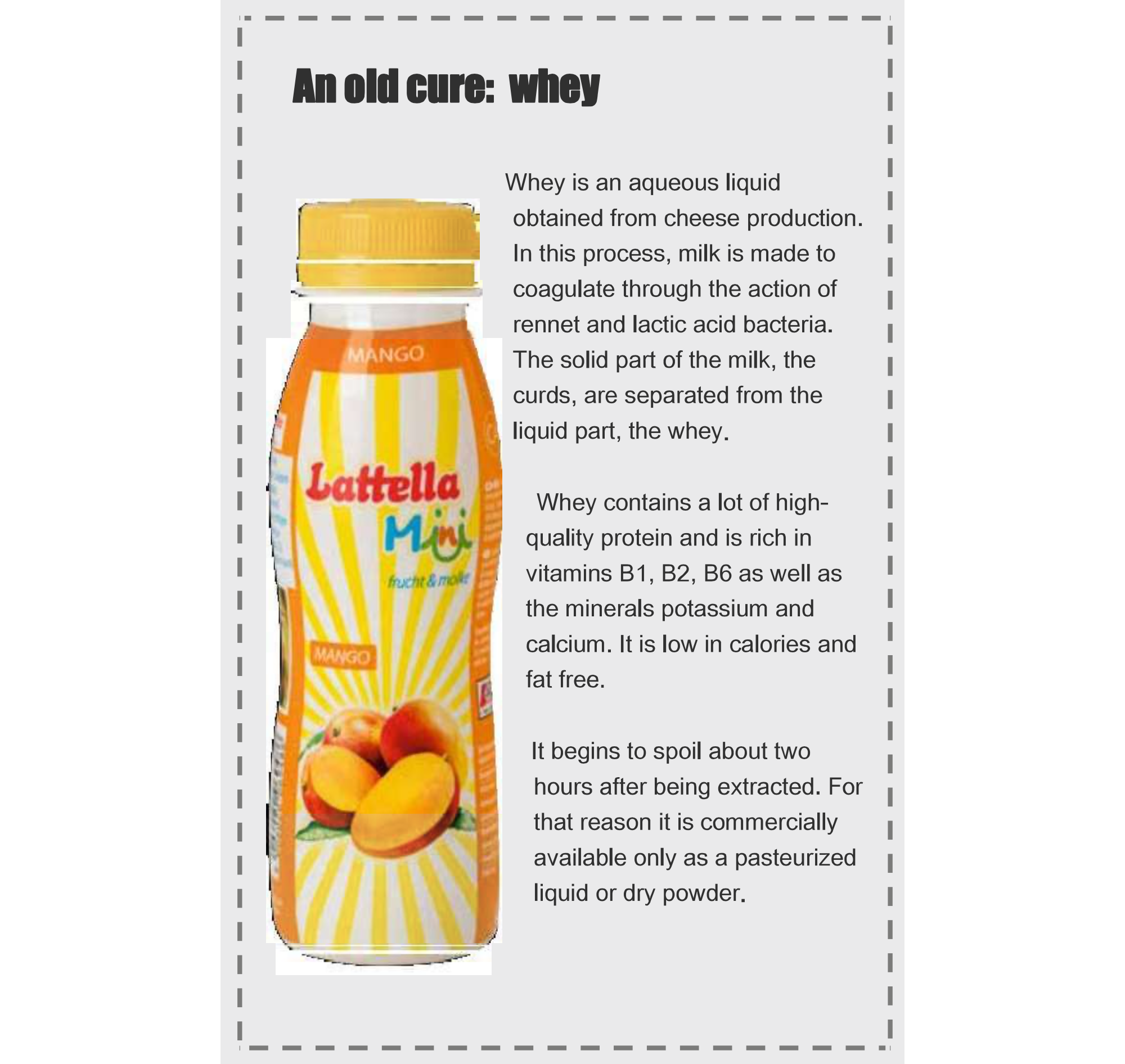
Author: Jürgen Skowaisa, Produktmanagement Radar, VEGA Grieshaber KG